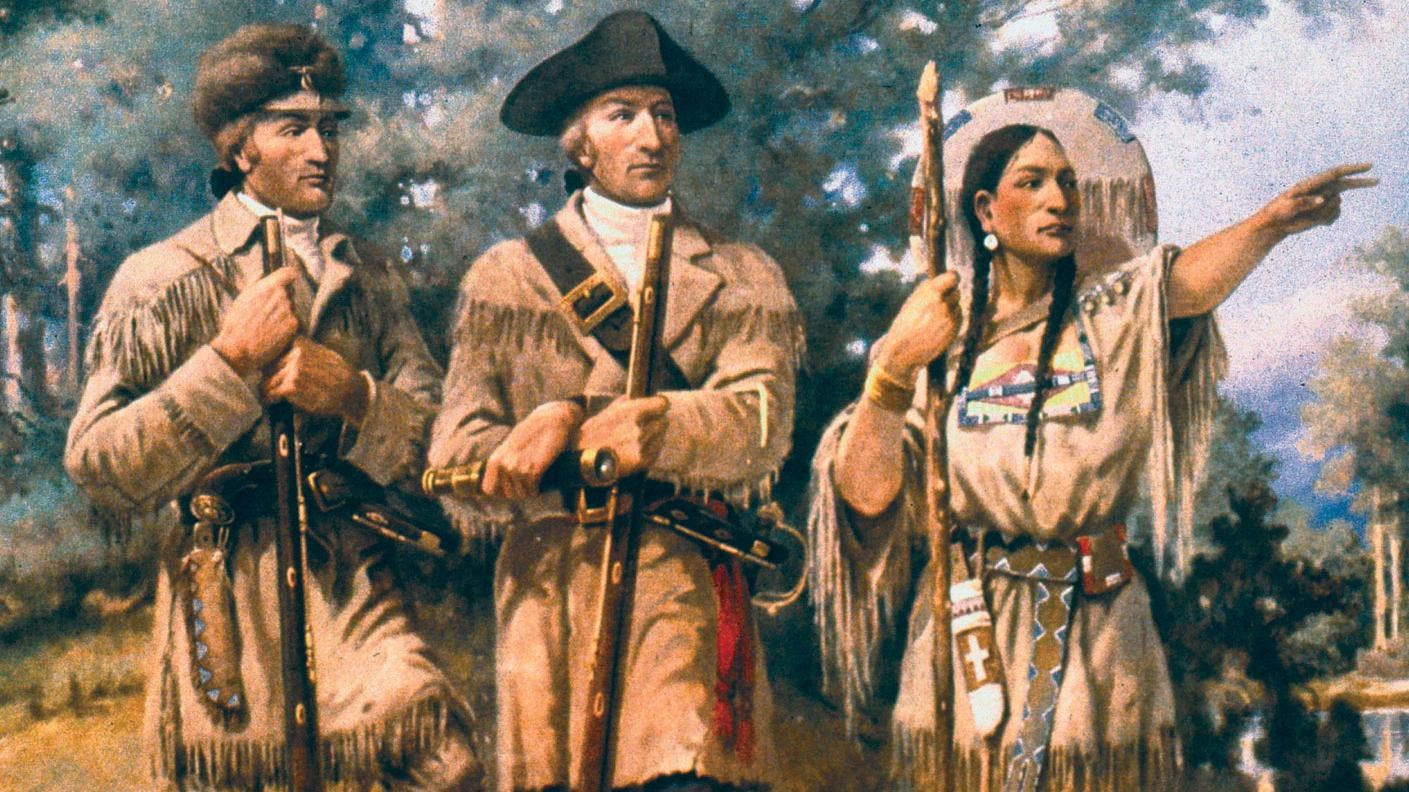Last updated: December 5, 2023
Place
Sacagawea’s Story

Paxson, Edgar S. 1912, Montana Historical Society
Amphitheater, Food/Drink - Coffee, Gifts/Souvenirs/Books, Historical/Interpretive Information/Exhibits, Parking - Auto, Restroom, Restroom - Accessible, Wheelchair Accessible
Sacagawea is one of the most recognizable names in American history.
But who was she?
Sacagawea spoke both Shoshone and Hidatsa. We know that she grew up with Shoshone people near what is now the Montana/Idaho border, and that, at the age of twelve, she was captured by Hidatsa people. There is some debate over whether she was originally born in a Hidatsa or Shoshone village, but we do not know for sure.
From age twelve to sixteen, she lived along the Knife River in a Hidatsa village called Awatixa.
She was married by age sixteen, and we do not know how much choice she had in the matter. Her husband, Toussaint Charbonneau, was thirty years older than her and had another wife, named Otter Woman. Sacagawea had a baby at age sixteen, and her son had a French name, like his father.
We know she was happy to reunite with her Shoshone family and friends. She served as a translator and diplomat for the Lewis and Clark Expedition, a liaison between cultures.
But there is so much we will never know. Oral histories and written documents only tell us so much.
What would it have been like to be an Indigenous woman on this American military expedition? In their respective journals, Meriwether Lewis, William Clark, Patrick Gass, and Joseph Whitehouse often used an offensive term to describe Sacagawea. These men, on a colonizing mission, saw her usefulness while also discriminating against her based on her race and gender. How was Sacagawea different than the woman we read about in those journals?
Whoever she was, Sacagawea has captured the imagination of so many people over the last two hundred years. In the 1910s, women fighting for suffrage used Sacagawea as an example of a woman casting a vote. In 2000, the U.S. Mint put an image of Sacagawea and her baby on a dollar coin. There are more statues of Sacagawea in this country than of any other American woman.
Perhaps it is because she was a woman—with a baby!—in a male space. Perhaps it is because she had a foot in so many cultures. Very likely we remember her because, unlike other Indigenous women, White men wrote about her, and those words lived on in print.
About this article: This article is part of a series called “Pivotal Places: Stories from the Lewis and Clark National Historic Trail.”
Lewis and Clark NHT Visitor Centers and Museums
This map shows a range of features associated with the Lewis and Clark National Historic Trail, which commemorates the 1803-1806 Lewis and Clark Expedition. The trail spans a large portion of the North American continent, from the Ohio River in Pittsburgh, Pennsylvania, to the mouth of the Columbia River in Oregon and Washington. The trail is comprised of the historic route of the Lewis and Clark Expedition, an auto tour route, high potential historic sites (shown in black), visitor centers (shown in orange), and pivotal places (shown in green). These features can be selected on the map to reveal additional information. Also shown is a base map displaying state boundaries, cities, rivers, and highways. The map conveys how a significant area of the North American continent was traversed by the Lewis and Clark Expedition and indicates the many places where visitors can learn about their journey and experience the landscape through which they traveled.
